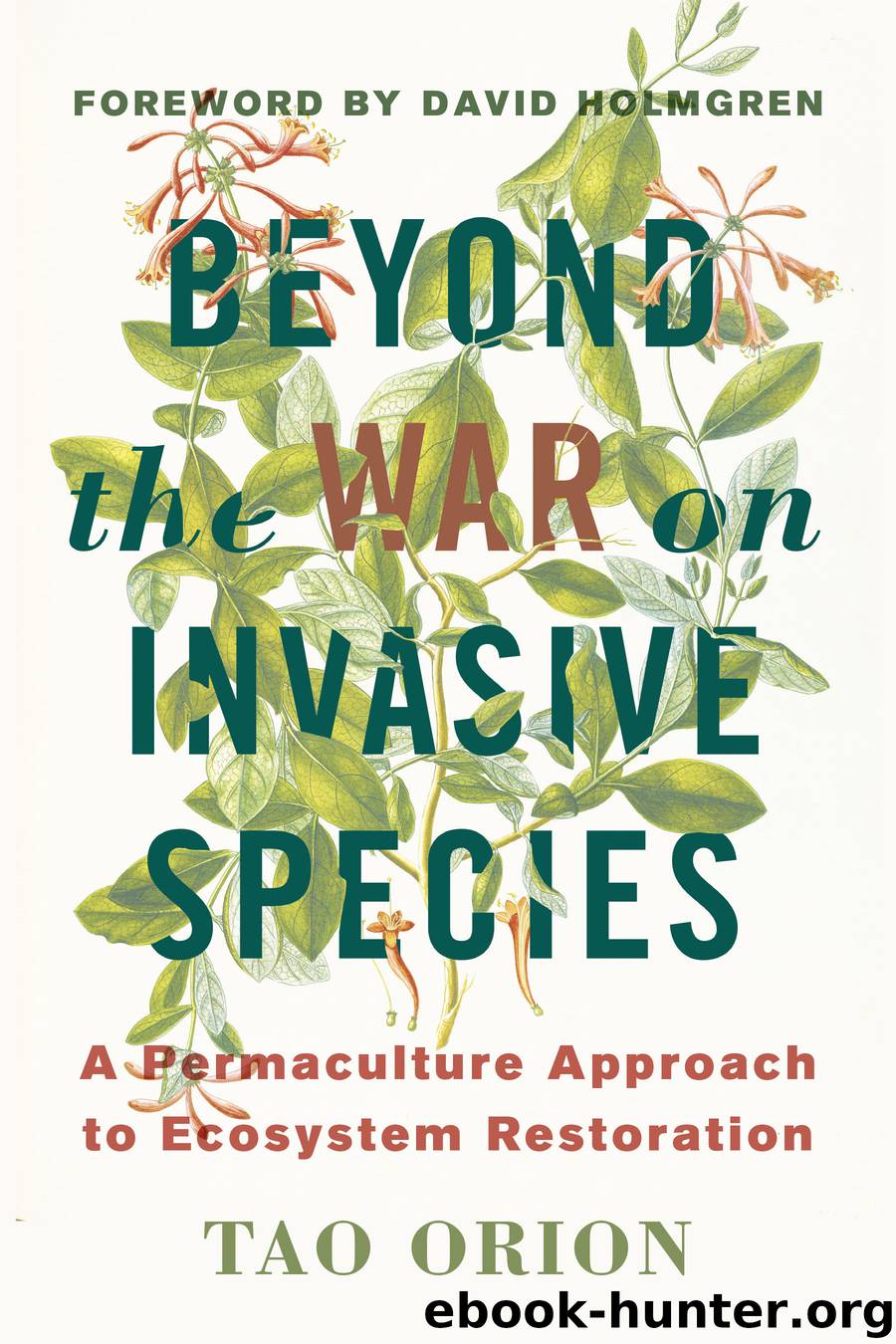Beyond the War on Invasive Species by Tao Orion

Author:Tao Orion
Language: eng
Format: epub
Publisher: Chelsea Green Publishing
Published: 2015-06-09T23:28:45+00:00
Everyone Gardens
“We are all indigenous to this planet, this garden we are being called on by nature and history to reinhabit in good spirit. To restore the land one must live and work in a place. The place will welcome whomever approaches it with respect and attention. To work in a place is to bond to a place: people who work together in a place become a community, in time, grows a culture. To restore the wild is to restore culture.”
—GARY SNYDER
When Fr. Bartolomé de Las Casas arrived on the island of Hispaniola in 1502, he noticed the native Taino people making paper and cloth from mulberry bark and remarked that there were “as many mulberries as weeds” growing on the island.1 Mulberries are native to China, where people have made textile products from the multifunctional trees for thousands of years. Las Casas noted their prolific growth and widespread use a mere ten years after Columbus made his first incursion into the Americas, decades before their planned introduction for the same purpose. Other research shows that mulberries were well known and heavily utilized in relatively “uncontacted” tribal areas of Mexico and that the tools and techniques used to make paper from their bark were identical to those found in Southeast Asia.2 The Maori people carried mulberry starts with them when they left Polynesia to settle New Zealand more than 1,200 years ago and planted them to continue their papermaking tradition. Mulberries were introduced and incorporated both culturally and ecologically into the Americas and other lands well before Columbus and his contemporaries weighed anchor to mark the beginning of the most recent period of colonization.
Though Columbus and other explorers from the late fifteenth and early sixteenth centuries are typically credited as the first people technologically capable of transoceanic seafaring, expeditions funded by European monarchs followed a long history of people crossing oceans in search of new lands. People traveled to Australia from Papua New Guinea or Timor 50,000 years ago.3 And according to some research, there is evidence from 840,000 years ago for Homo erectus, the progenitor of our species, demonstrating “almost habitual use of navigation” between islands in Southeast Asia.4 Bill Mollison notes that Polynesians used pattern maps that “lacked scale, cartographic details, and trigonometric measures, but nevertheless sufficed to find 200–2,000 island specks in the vastness of the Pacific Ocean! Such maps are linked to star sets and ocean current and indicate wave interference patterns; they are made of sticks, flexed strips, cowries and song cycles.”5 Though these ancient travelers didn’t use written language, they employed sophisticated understanding and application of natural patterns.
People transformed the ecosystems they encountered as a matter of course, not least through the introduction of culturally important species of plants and animals they brought along with them on their migrations. Seeds, tubers, and cuttings of particularly hardy, delicious, or nutritious species that people knew how to cultivate and use made the journey with these early explorers. A text from Easter Island refers to “path of
Download
This site does not store any files on its server. We only index and link to content provided by other sites. Please contact the content providers to delete copyright contents if any and email us, we'll remove relevant links or contents immediately.
The Lonely City by Olivia Laing(4768)
Animal Frequency by Melissa Alvarez(4424)
All Creatures Great and Small by James Herriot(4266)
Walking by Henry David Thoreau(3921)
Exit West by Mohsin Hamid(3791)
Origin Story: A Big History of Everything by David Christian(3665)
COSMOS by Carl Sagan(3584)
How to Read Water: Clues and Patterns from Puddles to the Sea (Natural Navigation) by Tristan Gooley(3430)
Hedgerow by John Wright(3313)
How to Read Nature by Tristan Gooley(3289)
The Inner Life of Animals by Peter Wohlleben(3282)
How to Do Nothing by Jenny Odell(3263)
Project Animal Farm: An Accidental Journey into the Secret World of Farming and the Truth About Our Food by Sonia Faruqi(3188)
Origin Story by David Christian(3169)
Water by Ian Miller(3153)
A Forest Journey by John Perlin(3042)
The Plant Messiah by Carlos Magdalena(2899)
A Wilder Time by William E. Glassley(2833)
Forests: A Very Short Introduction by Jaboury Ghazoul(2814)
